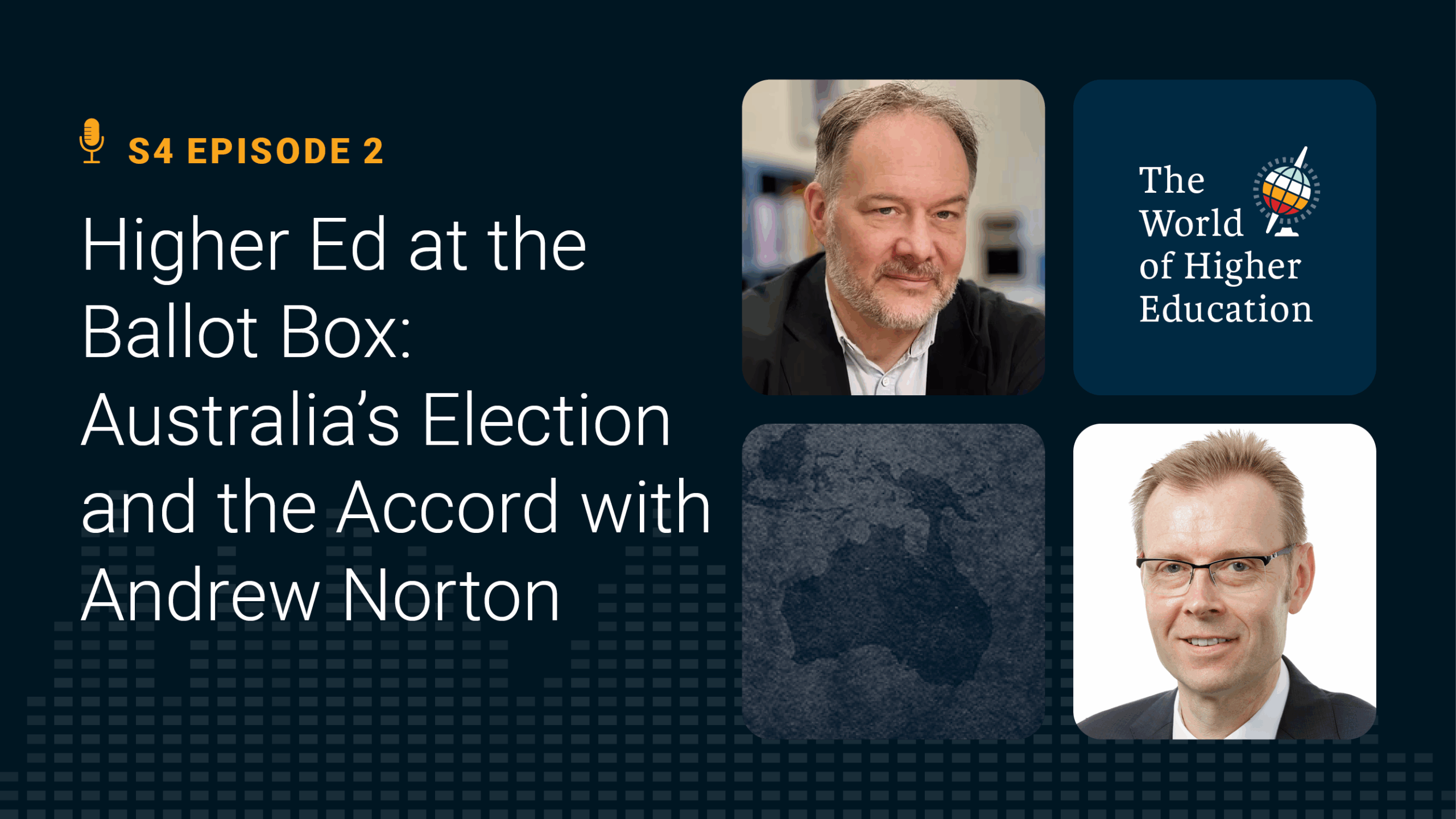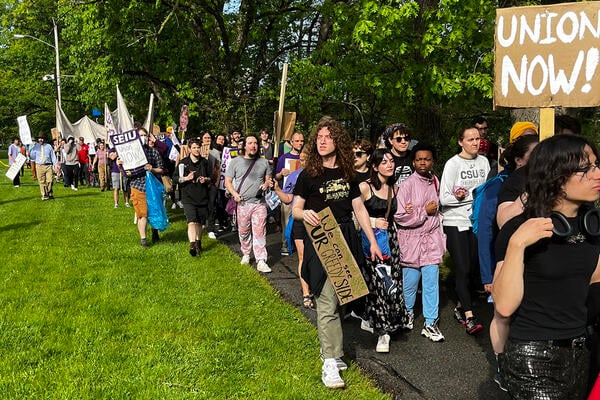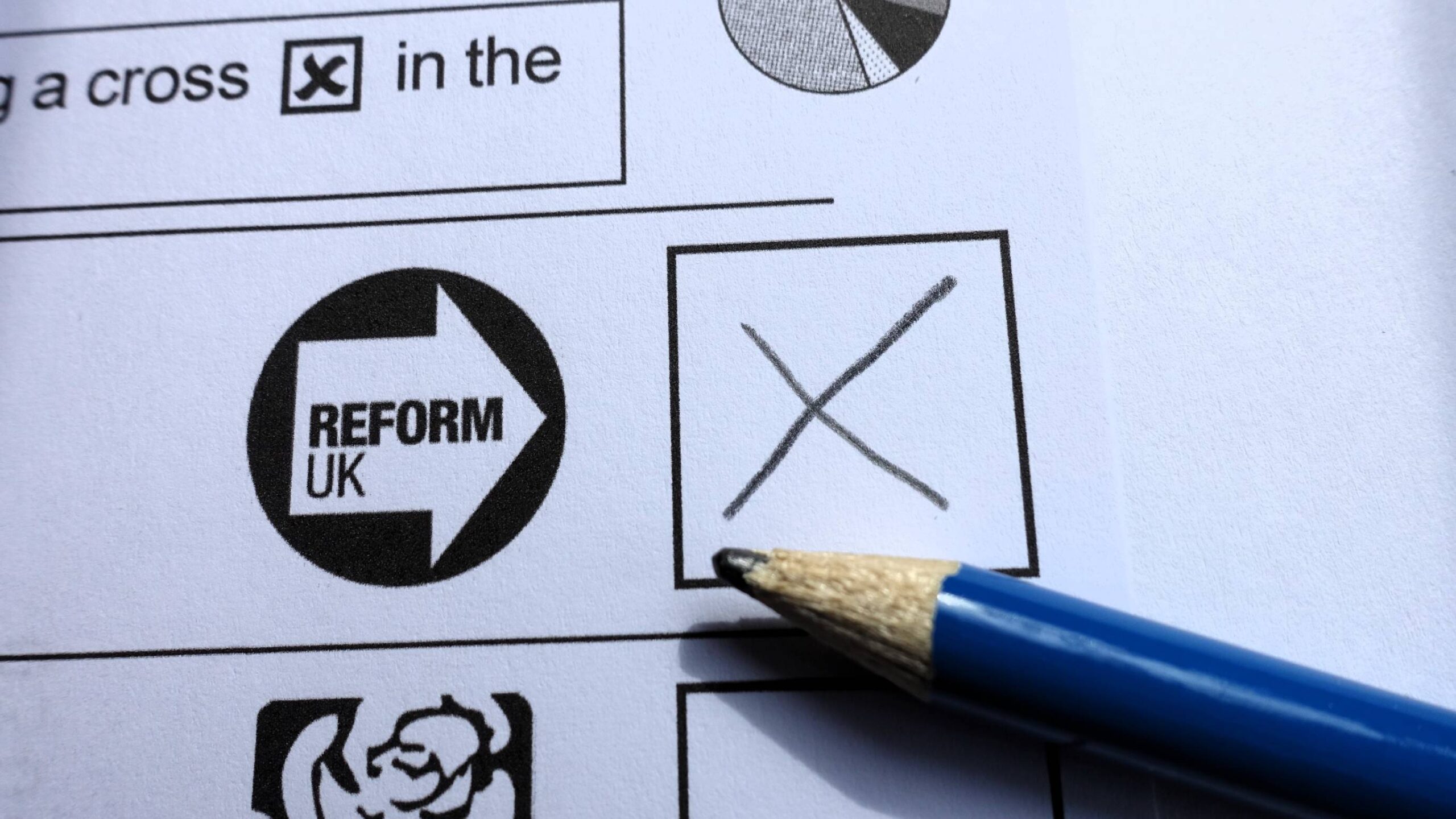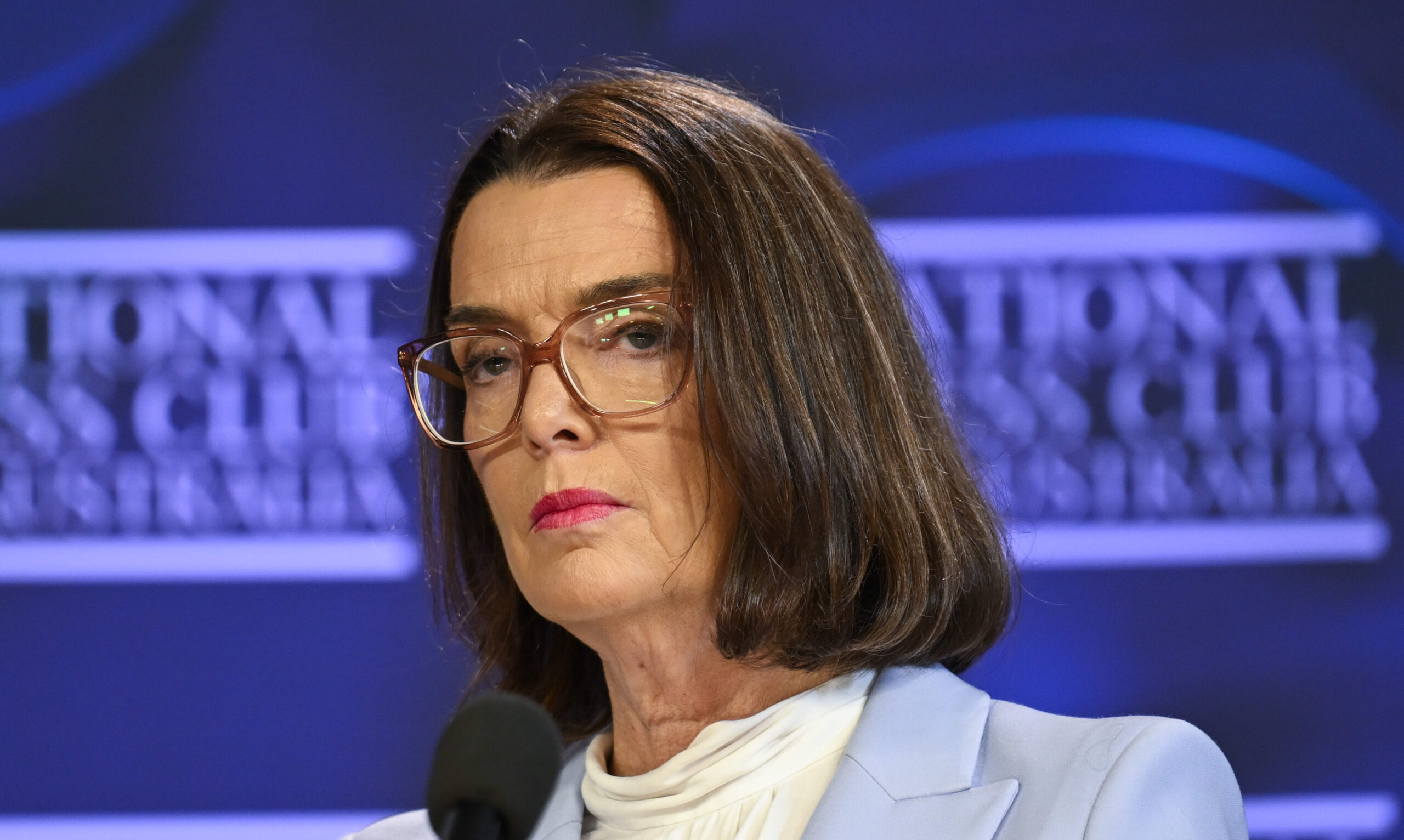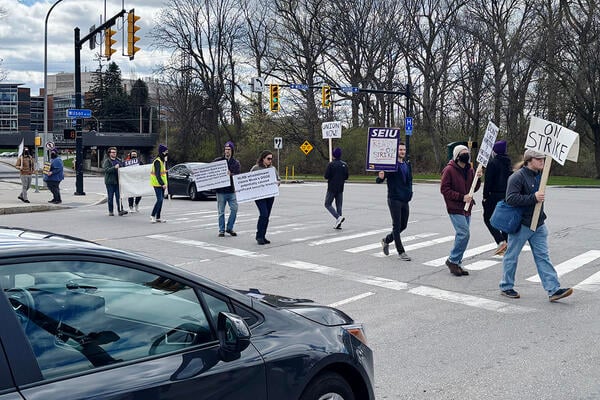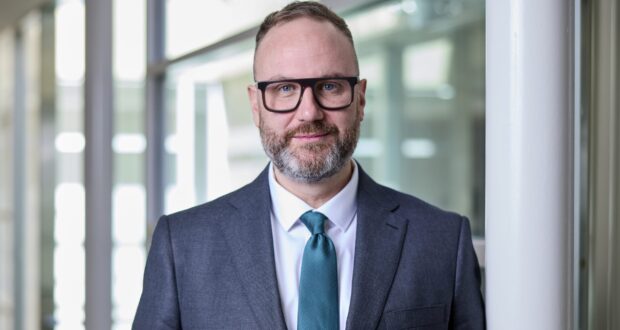It’s been about eighteen months since this podcast last visited Australia. The story at the time was about something called “the Universities Accord”, an oddly-named expert panel report which was supposed to give the Labor government a roadmap for re-structuring a higher education system widely believed to be under enormous stress.
Since then, lots has happened. There’s been an international student visa controversy, a whole ton of cutbacks at institutions (including a quite wild polycrisis at Australian National Universities) and a general election which saw the Labor Party unexpectedly returned to power with an increased majority.
So, what’s on the agenda now? To answer that question, we called up long-time podcast friend Andrew Norton, currently Research Fellow at the Centre for Independent Studies, and Policy and Government Relations Adviser at the University of Melbourne, and as usual he’s here to give us the straight dope down under. Our discussion ranges pretty widely over developments in the last 18 months: to me the most interesting question is why the government has been so slow to move on key aspects of the Universities Accord. Andrew’s answer to that question is, I think, pretty revealing, and should resonate both in Canada and the UK – quite simply, left-wing governments aren’t as different from right-wing ones as you might think when it comes to delivering change in higher education.
But enough from me, let’s listen to Andrew.
The World of Higher Education Podcast
Episode 4.2 | Higher Ed at the Ballot Box: Australia’s Election and the Accord with Andrew Norton
Transcript
Alex Usher: Andrew, welcome back. Last time we talked was about 18 months ago, and the Universities Accord report had just dropped. There were a whole bunch of recommendations about funding, job-ready graduates, access, system regulation, and even something odd about a national regional university. Labor had about a year and a half between the time the report came out and the election this past May. What did they do with that time? What aspects did they move on most quickly?
Andrew Norton: It was a bit of an odds-and-ends approach. The big, expensive changes to the way students and institutions are funded have really been postponed. But they’ve done a range of things.
They’ve introduced a national student ombudsman—the first national complaints organization for students. They’ve created a new system for funding people in preparatory courses. They’ve increased regulations on universities to support students who are struggling or at risk of failing.
Mostly, they’ve done things aimed at helping students, while the big structural work is still to come.
Alex Usher: So, they did the cheap stuff?
Andrew Norton: Essentially. They did the things that were cheap for the government but shifted costs onto the universities.
Alex Usher: And with the other elements, did they say no to any of them? Or did they just leave it quiet—maybe we’ll do it, maybe we won’t?
Andrew Norton: The thing they’re attracting the most criticism for is the Job-Ready Graduate student contribution. Back in 2021, the previous government radically redesigned how students pay for their education. The idea was to encourage people into courses the government wanted, like teaching or nursing, by discounting student fees, and to discourage others by raising fees in areas the government regarded as “not job-ready,” like humanities and social sciences.
The Accord’s final report said the system should change—go back to something closer to what we had before, where there’s a rough relationship between fees and likely future earnings. But the government has deferred this to the Australian Tertiary Education Commission (ATEC), which currently exists as a website but doesn’t yet have legislation. That legislation will probably come early next year.
So, the earliest possible date for changes is 2027, and quite possibly later. The government is getting a lot of criticism because, while fees were being increased, they said it was a bad thing and that they’d fix it. Yet first they sent it off to the Accord review, then to ATEC, and now who knows when it will actually happen.
Alex Usher: So, there’s a lot of kicking the can down the road at a time when institutions are having financial trouble?
Andrew Norton: That’s true. A lot of institutions are reducing staff and cutting courses. Exactly why varies—some are still struggling with international student numbers, some with domestic enrolment. But the key problem is that costs are rising faster than revenues.
They’ve signed wage deals that are well above inflation, while government grants are only indexed to inflation. So they’re in a situation where they have to control costs, and staff numbers and courses are one of the few levers they have left.
Alex Usher: You mentioned international students. One of the things we noticed here in Canada—because we went through the same thing a few months before you—was this whole notion of international student caps. The idea was similar: there was a perception, I’m not sure how true it was, that international students were affecting the housing market. Both Labor and the opposition supported caps; they just disagreed on how severe they should be. What actually happened on that front? Are there caps, and how are they regulated?
Andrew Norton: I think the answer is: sort of.
The background is that in the second half of 2023, the government started to believe that international student numbers were contributing to housing shortages and rising rents. Many in the sector agree there’s some truth to that. If you add up all the students, ex-students on temporary graduate visas, and people on bridging visas—often students waiting on another visa—you’re probably looking at around a million people in a population of about 27 million. It’s hard to argue that it has no impact on the housing market.
The government introduced a range of migration measures: making visas more expensive and making it harder to get a student visa in the first place. But this wasn’t really affecting Chinese students, who remain the largest single group in Australia. So in May last year, they introduced legislation that would have put formal caps on the number of students each university and education provider could take. Everyone thought this was certain to pass, since the opposition also supported caps.
But in a big surprise last November, the opposition changed course and didn’t support the bill. Combined with the Greens’ opposition, it couldn’t get through the Senate and didn’t become law.
Instead, the government recycled the caps idea at the “national planning” level. The main feature was that once an institution hit 80% of its allocated number, further visa applications would go into a “go-slow” lane. The implied threat was that if an institution went over in future, there could be penalties. But so far, that hasn’t happened.
So now we’re essentially back to a migration-driven set of restrictions on international numbers.
Alex Usher: Before we get to the election, there was an interesting article—I think it was in Times Higher—about the idea that universities had nobody in their corner going into the election, that they’d lost some of the social license they once had.
Part of it was about the very large vice-chancellors’ salary packages, which have been an issue for a long time—many presidents earning over a million dollars. But there have also been persistent stories about wage theft, with universities systematically underpaying employees. Then there are the narratives about “management gone mad” and cuts—particularly at the Australian National University.
Is it true? Are universities more friendless in Australia than they used to be? Or is there something different this time?
Andrew Norton: I think there is something different this time. It’s not just that there have been a lot of issues.
On wage theft—as the union calls it—this has mostly resulted from universities relying heavily on casual or sessional employees. Payroll systems are complex, with different rates for different activities. It is genuinely hard to get right, but it seems almost every university has failed to align payroll systems with how people are actually employed.
As a result, about half the institutions have had to repay staff or correct wages they didn’t pay the first time. Roughly half a dozen universities are now facing high-level enforcement by workplace authorities, putting them in the same category as traditional rogue employers like those in retail.
The optics are terrible: people on very low wages aren’t being paid correctly, while vice-chancellors are earning over a million dollars a year. That contrast doesn’t look good.
The real big change, though, is political. The Liberal Party opposition has long been skeptical of universities, but what shocked institutions was that the governing Labor Party took the Accord review and, if anything, has been even harsher with universities than the previous government.
That’s why universities are reeling. They expected that after the change of government in 2022, life would get easier. It certainly hasn’t.
Alex Usher: Let’s talk about the election. Your election was only about a week after ours in Canada, and it seemed like a very similar story: a weak center-left government on course to be crushed by a right-wing party. But then that right-wing party suddenly didn’t seem so cuddly once Trump had been in office for two or three months. I think the difference, though, is that higher education actually played some role in the Australian election. What promises did the different parties make?
Andrew Norton: That was quite unusual. Higher education usually isn’t an election issue in Australia. But this time Labor picked up on discontent over student debt in its first term.
The issue was that we index student debt to inflation. And like in many other countries, there was a post-COVID inflationary period. At one point, indexation was around 7% in a single year.
I think that triggered what I’d call a latent issue. Over the 2010s, there was a big increase in student numbers and, correspondingly, in debt. We ended up with about 3 million people holding student debt, totaling over 80 billion Australian dollars. That’s a very large constituency. Labor realized that while this hurt them in their first term, maybe they could turn it into a positive.
They did something similar to what’s been discussed in the U.S.—or in some cases done in the U.S.—which was to promise cutting all debts by 20%. They announced this in November last year. During the campaign they didn’t push it hard until the final week, when they really started to focus on it.
There was a late surge in support for the government, which gave them a very large majority. My theory is that the 20% cut—which was worth more than $5,000 to the average person with student debt—was enough to swing people over the line and deliver Labor its big win.
Alex Usher: What I found odd about this is that debt doesn’t actually affect your payments in Australia, because you’ve got one of the purest and original income-contingent systems in the world. Cutting debt by $5,000 only reduces the length of time you’ll be paying—for example, my debt is paid off in 2050 instead of 2055. I’m amazed that would move the needle so much, because next year what everybody pays is still a function of their income, not the size of their debt. So how did that work?
Andrew Norton: I think it’s because the debt issue had become so salient in people’s minds. The strange thing is that, at the same time, Labor also promised to change the repayment system in ways that would actually reduce how much people repay this year, under laws already operating now. But that got almost no airtime.
When journalists called me, I’d ask, “Do you want me to talk about this too?” And they’d say, “What’s that?” There was zero recognition. It just wasn’t being highlighted.
One reason might be that the repayment change isn’t straightforward. While the average person will repay less, everyone will now face a marginal repayment rate of 47%—that’s including income tax plus the 15% of income they have to repay once they’re over $67,000 Australian.
As this comes into operation, I think there could be political problems. But during the campaign, the overwhelming focus—99%—was simply on the debt cut.
Alex Usher: Let’s be clear about that, because it’s interesting. Australia has always had an income-contingent system where, if you were below a threshold, you paid nothing. But as soon as you went over that threshold, you paid a percentage of your total income, not just the marginal income above the threshold.
Andrew Norton: The change is that it’s now a marginal system. And the threshold for starting repayment has moved from $56,000 Australian to $67,000. So a whole lot of people are now out of the repayment system as a result.
But there’s a downside: more people will see their debt keep rising through indexation, because they’re not making repayments—or their repayments are smaller than the amount added by indexation. I think that’s going to be a problem.
Alex Usher: What’s the marginal rate above that?
Andrew Norton: It’s 15% above $67,000, and then it goes up to 17% at $125,000 a year. Those are high numbers. Once you set a high threshold, you’ve got to set high repayment rates to bring in a reasonable amount of revenue for the government.
Alex Usher: Now that Labor has been reelected, what do you think their agenda looks like for the next three years? Which parts of the Universities Accord that they passed on last year are they actually going to move on? You’ve mentioned the Job-Ready Graduate program and the regulator. Anything else?
Andrew Norton: One thing they’ve already done, consistent with some of their earlier moves, is new legislation on what they call gender-based violence. That’s going to be quite complex regulation for the sector to manage.
The big issue ahead is how they’ll distribute student places in the future. Their general mantra is “managed growth.” What they’re aiming for is a system with much more government control over the number of student places at each university, and likely also more control over which courses those places are allocated to.
At the moment, universities have a maximum grant, but aside from niche areas like medicine, there’s effectively no control over how those places are distributed internally. And even though universities eventually use up all their public funding, they can still enroll more students if they’re willing to accept only the student contribution. Some universities have been quite happy to do that.
Alex Usher: Similar to what we have in Ontario.
Andrew Norton: Exactly. The universities that are currently what we call “over-enrolled”—taking more students than they’re being fully funded for—are feeling vulnerable. Some of them will find this shift very difficult to manage.
Alex Usher: So, the government wants to control domestic student numbers through this mechanism, and they’re effectively going to do something similar for international students through a system of caps, perhaps. Are they going to move on caps again, and will it be in line with this whole notion of managed growth?
Andrew Norton: I think so, yes. The Australian Tertiary Education Commission has said it will regulate international student numbers in the future—at least in the university sector. Presumably there will be some coordination between the domestic and international totals.
In the past, there’s been discussion of saying international students should make up no more than a certain percentage of total enrollments. Some universities already do this voluntarily, so I wouldn’t be surprised if a maximum percentage is formally set.
Alex Usher: It’s interesting you mention growth, because we’ve just been talking about how difficult it is for universities to balance their budgets. If there’s no new money—either from domestic sources or international students—how are they going to grow? I just saw, I think it was today, that the University of Melbourne is giving up on building a second campus.
Andrew Norton: That’s partly due to problems with the particular site they had chosen.
To backtrack a little—when they say “managed growth,” that doesn’t necessarily mean actual growth. They used the same phrase for international students even when the goal was clearly to reduce numbers. So in that case, it was really managed degrowth rather than growth.
What they do want in the long run, as recommended in the Accord, is for a higher percentage of people—particularly from disadvantaged backgrounds—to acquire a university degree. That’s the growth they want to achieve.
The challenge is the student market. The school-leaver market, in my analysis, is probably recovering after being flatter than usual. Universities that rely on school leavers are likely the ones that have managed to over-enroll.
But the mature-age market is in a long slump, apart from a brief spike during COVID. I don’t think that market will fully recover, because many in that cohort have already earned their bachelor’s degrees at a younger age and aren’t returning in the same numbers as before.
Alex Usher: With all these restrictions—fewer international students, slumping domestic enrollments, and declining government funding—what do you think the system looks like five years from now? By 2030, is this a sector that’s found its mojo again, or are we looking at long-term decline?
Andrew Norton: I don’t think it’s as bad as it looks in some other countries, where demographics are worse than in Australia. But I do think the 2020s will continue to be a difficult period.
We’ve been talking about potential structural changes in the labor market and the impact of AI, which could devalue a degree. That could cause shocks in the system we haven’t yet seen.
Higher education has survived numerous ups and downs in the labor market over the decades. Usually, any drop-offs are short-term, and then growth returns. But maybe this time is different—I’m not sure. Right now, we’re not seeing huge effects of AI in either international or domestic enrollment numbers. But it’s definitely possible that, once we start seeing negative labor market signals—like new graduates struggling to find work—that could hit demand.
Alex Usher: Andrew, thanks for joining us on the show.
Andrew Norton: Thanks, Alex.
Alex Usher: And thanks as always to our excellent producers, Sam Pufek and Tiffany MacLennan, and to you—our listeners and readers—for joining us. If you have any questions or comments about today’s episode, or suggestions for future ones, please don’t hesitate to get in touch at [email protected].
Join us next week when Marcelo Rabossi from the Universidad Torcuato Di Tella returns to talk about new developments in Argentina’s university financial crisis, and the showdown between Congress and President Javier Milei over a new higher education law. Bye for now.
*This podcast transcript was generated using an AI transcription service with limited editing. Please forgive any errors made through this service. Please note, the views and opinions expressed in each episode are those of the individual contributors, and do not necessarily reflect those of the podcast host and team, or our sponsors.

